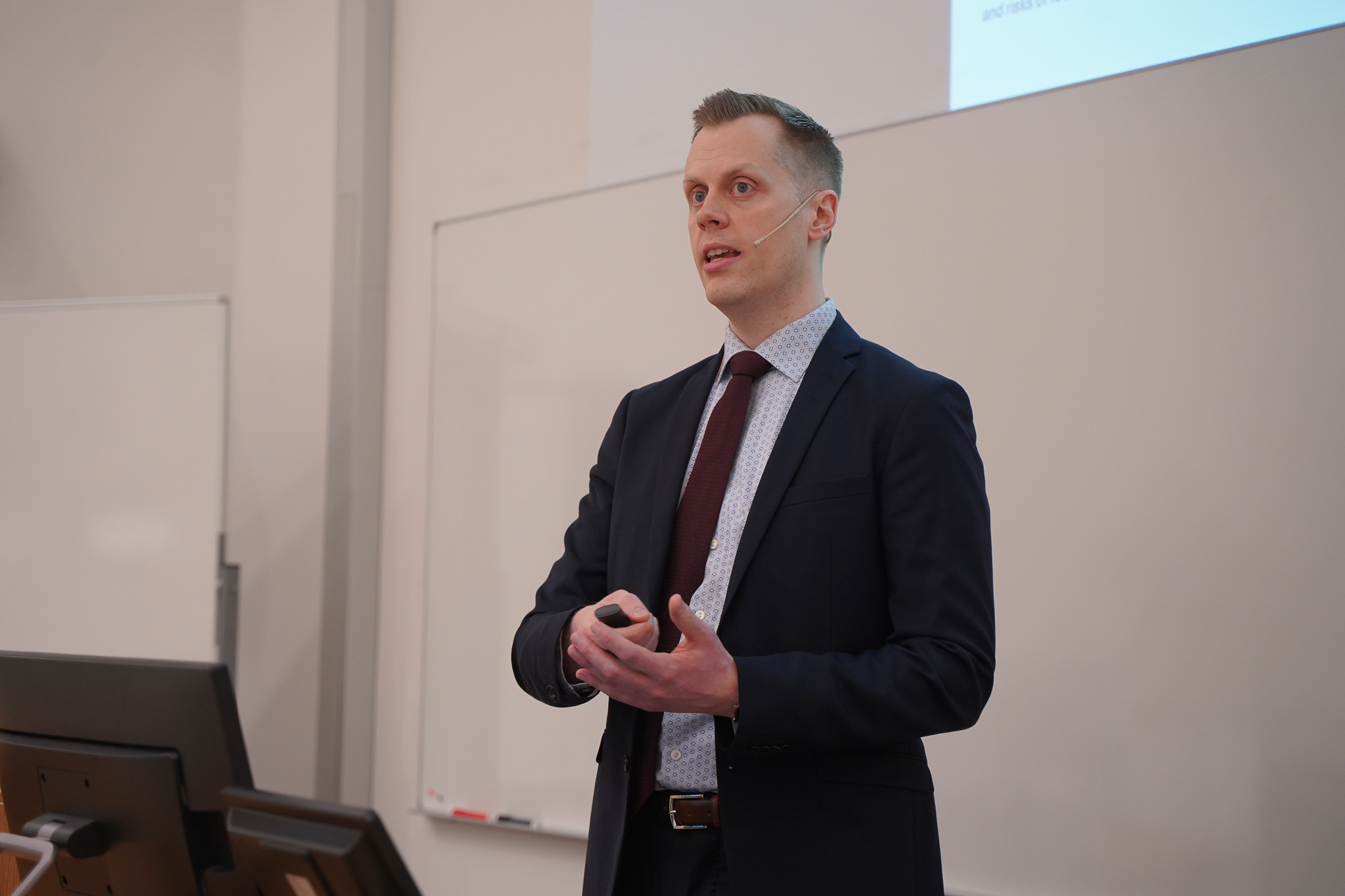
Jørgen Agersborg defending his PhD thesis.
State Secretary Marianne Wilhelmsen visited UiT The Arctic University of Norway to learn more about SFI Visual Intelligence and UiT's AI initiatives in education and research.
KI-chatboten Grok har fortalt brukere at verdens rikeste mann er både smartere og sprekere enn noen andre i verden – inkludert basketballstjernen LeBron James og Leonardo da Vinci (Norwegian news article on tv2.no)
Forskere har utviklet kunstig intelligens som automatisk kan måle hjertets struktur – både raskt og presist (Norwegian popular science article on forskning.no)
The Visual Intelligence Graduate School gathered our early career researchers for a 3-Day Science Communication workshop at Skibotn field station outside of Tromsø, Norway.
Onsdag inngikk Aker Nscale og UiT Norges arktiske universitet en ti-årig samarbeidsavtale for å utvikle og styrke kompetansemiljøene for kunstig intelligens i Narvik og Nord-Norge. Aker Nscale garanterer for 100 millioner kroner i avtaleperioden (news story on uit.no)
Centre Director Robert Jenssen and PhD Candidate Lars Uebbing had two fruitful days together with researchers at The Alan Turing Institute's headquarters in London
Centre Director Robert Jenssen represented Visual Intelligence at Outlook North in Harstad, Norway
Senior Research Scientist Anders Waldeland is nominated for the Digital Trailblazer 2025 Award. The winner is announced at the Dig X Subsurface conference in Oslo, Norway in December.
Visual Intelligence researchers have developed an AI to automatically measure the heart's structure – both quickly and accurately. They believe it can help doctors detect and treat cardiovascular diseases faster.
Samuel Kuttner and Elin Kile presented research on PET and artificial intelligence at evening seminar on early detection of prostate cancer organized by the Norwegian Prostate Cancer Assocation.
Centre Director Robert Jenssen represented Visual Intelligence at Svarte Natta 2025 – North Norway's journalist and media conference organized by the Norwegian Union of Journalists.
Congratulations to PhD Candidate Preetraj Bhoodoo, who recently won the Best Poster Presentation Award at the PRESIMAL Autumn Reserach School 2025.
We happily welcome Sigurd Almli Hanssen and Adrian Duric as new PhD Candidates at SFI Visual Intelligence's hubs in Tromsø and Oslo respectively.
AI expert Eirik Agnalt Østmo explains that the law is intended to make AI technology safe for everyone (Popular science article on sciencenorway.no)
Aitor Sánchez is a PhD candidate at the Intelligent Systems Group of the University of the Basque Country in Spain. He visited Visual Intelligence in Tromsø from March to June 2025.
We happily welcome Nicolo Grometto as a new PhD Candidate at SFI Visual Intelligence in Bodø, Norway.
Visual Intelligence hosted a hybrid meeting with researchers from the Alan Turing Institute at UiT The Arctic University of Norway in Tromsø, Norway.
Visual Intelligence researchers participated in this year's Forskningsdagene: an annual national research festival which aims to stimulate the general public's interest and curiosity in research.
Norge arbeider med å få på plass en egen lov for kunstig intelligens. Loven skal passe på at vi bruker KI på en trygg måte (Norwegian news article at uit.no).
85 researchers from the Visual Intelligence consortium convened for the Visual Intelligence Days: the annual workshop where researchers, user partners and invited guests convene to share knowledge and updates on the latest research and innovations within the centre.